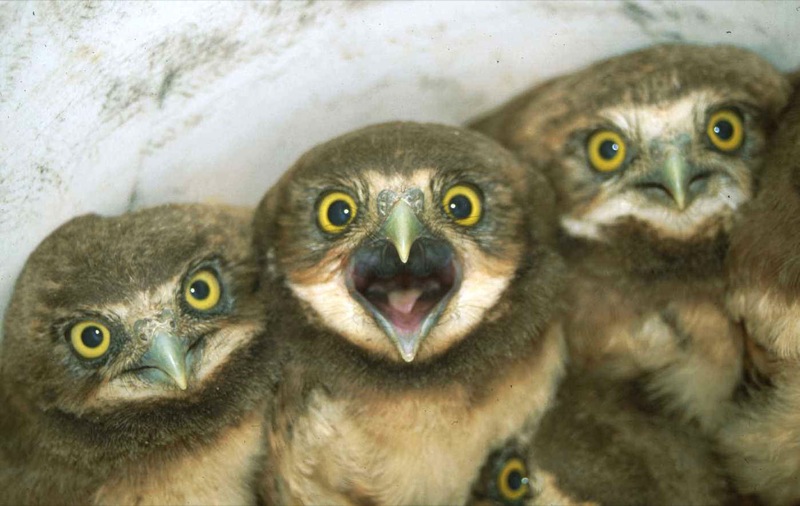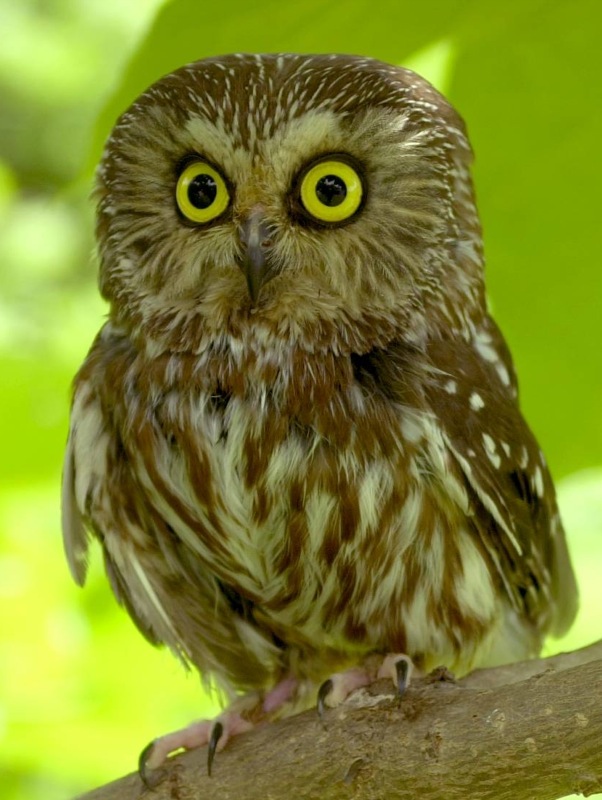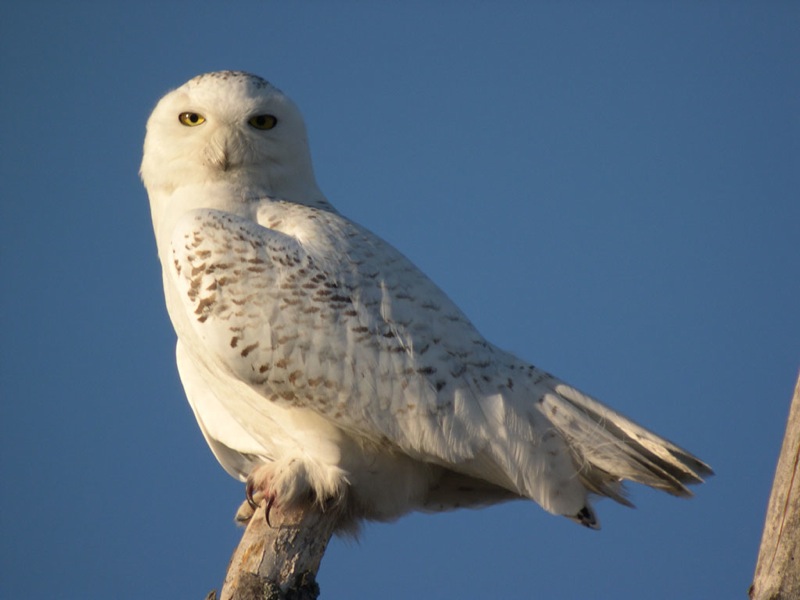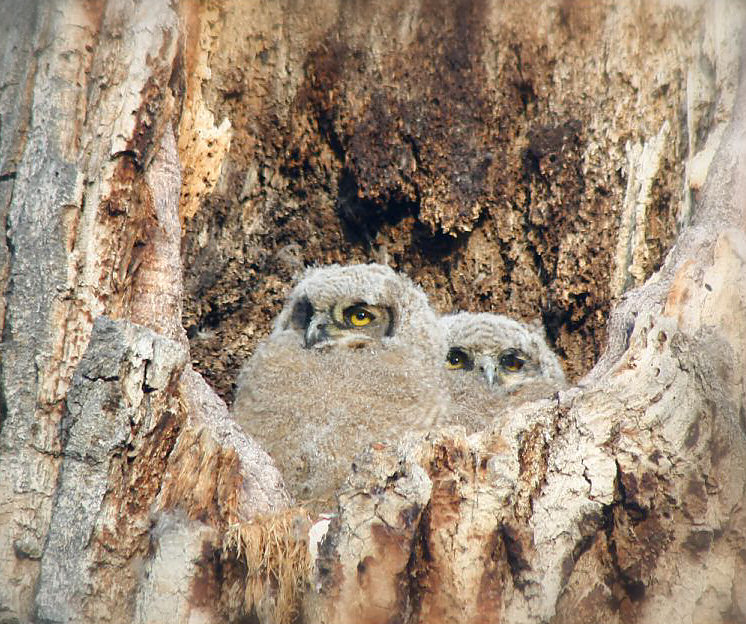How are you? I hope you've had a good weekend. Saturday I had to work at my temp job, which was weird as I used to work EVERY Friday and Saturday night at my former second shift job. It's been nice to have weekends off for the last year and a half, let me tell ya!
As for critters, PG just reported a deceased mouse in her apartment. She also reported that the budster, recent new doggy owner and Critter Corner fan AH has moved into the apartment downstairs! Yay!
This week I had a dream about giving my friend SH an Adopt An Owl for Christmas. Of course I immediately went to the computer as I awoke, and searched for this possibility. But SH is also a big fan of foxes and goats. I decided to email her about my quandary instead of actually sponsoring a creature in her name!
So today I dedicate this owl post to the lovely SH; friend, artist, chef, bridesmaid and fellow critter lover!

Baby burrowing owls!
Owls are members of the Strigiformes order, 200 species strong. As with other raptors, their taxonomy is under investigation as more DNA is researched. Divided into two groups, Tytonidae, or barn owls, and Strigidae, or typical owls, these birds cover every continent except for Antarctica and some isolated islands.
Some owls have ear tufts, some do not. Most owls have flattened feathers around their eyes, creating their distinctive masked appearance. These are called facial discs, and help funnel the sounds of prey towards the ears of the birds. Some owls have ear openings that are unevenly placed on each side of the head, which also help with sound detection. Obviously, owls have great vision, especially at night. Their eyes are fixed in their sockets, which necessitates increased neck flexibility. Most owls can turn their heads 135 degrees or more. Owls cannot see clearly a few inches from their faces, however. While some owls are active in the early morning or late evening, only the burrowing owl parties in the day; the rest of them are nocturnal.
Minnesota is home to many species of owls, more than I expected. These include screech, barn, short-eared, barred, boreal, long-eared, hawk, great grey, burrowing, snowy, great horned and saw-whet owls. I'll focus today on the last four in the list.
Burrowing owls are one of the most endangered owls in Minnesota. This is because burrowing owls are prairie birds, and as that habitat disappears, so do they. In 1985 burrowing owls from South Dakota began to be reintroduced into southwest Minnesota.

These non-tufted owls are small, from eight to ten inches high and weighing five to seven ounces. They have long, smooth legs for digging! If you chase a burrowing owl, instead of flying away he will run to his hole and jump in! Burrowing owls will often use abandoned burrows of prairie dogs, badgers and ground squirrels for their homes, but they can dig their own as well. They eat lizards, insects, rodents and birds.
Even smaller than the burrowing owl is the saw-whet owl. These little guys are named for their screechy cry!

The cuteness.
Weighing only four ounces, saw-whet owls are seven to eight inches tall. They nest near bogs and swamps and prefer coniferous forests. These tiny owls enjoy amphibians along with the usual insects and rodents.
On the other side of the size spectrum are great horned owls!

These birds are the largest tufted owl, standing at 18 to 25 inches tall and weighing three to five pounds. They are one of the few animals that kill skunks, and can eat up to 4,000 mice a year! These owls also take rabbits, squirrels and waterfowl. They're found from Alaska to the southern tip of Patagonia. Also great horned owls have long eyelashes!
Finally, our wintry friend, the snowy owl!

Weighing up to five pounds, snowy owls are among the heaviest. Their range is circumpolar, and they actually do not nest in Minnesota. Like many arctic and subarctic animals, snowy owls rely heavily on the populations of lemmings and other small rodents. In years of especially snowy weather or reduced numbers of lemmings, called "invasion years", snowy owls will fly south to the northern United States to hunt. They've been spotted as far south as Indiana. Snowy owls also hunt hares and ptarmigan, and nest right on the ground!
Fun Fact: A group of owls is called a parliament!
Perhaps because they are nocturnal birds, or because they nest in heavily forested areas, owl nooky has not been studied much. With most species courtship and nesting territorialism begins in wintertime. The owls begin vocalizing even more during this period, sometimes creating love duets. Some owls practice ritualistic preening, and often males bring their honeys a meal. The latter is probably the most important as most males provide all of the food for the nesting female. Usually owls "nest" in January and February. Building lovely nests is not a priority for owls; mostly they will use hollow trees, existing nests from other birds or squirrels, or protected rock ledges. One to five eggs are laid separately, hatching 30 to 37 days later. Like with the snowy owl, sometimes the amount of eggs laid is related to the size of the local rodent population. The owlets may leave as soon as six to nine weeks, or may stay with their parents until the end of the summer.
Great horned owlets:

Fuzzy, fuzzy, cute, cute!
Aren't owls cool? I love them and want one as a pet. He could live in a special dark box in our apartment (with a camera in there) and then have a special owl-door to fly outside at night! Our owl could live right next to our pet bats. Check out the cool Raptor Center at the University of Minnesota to see some owls!
Do any of you have owl stories?
Happy Almost-Christmas week!
xoxoxo
Wendell!

4 comments:
Man, those owls' eyes are freaking me out! It's like they are watching every move! I better not run around the house naked or something... :)
The snowy owl appears to be sans beak, but I think it's just hiding under his white fuzziness. Cute! I drove alongside a red fox for over a minute last night. The jaunty little fellow was trotting down an otherwise empty road. He seemed pleased to have company. There is a barn owl in my friends' woods. I was a picture they took of him this summer, and then one night I pulled onto their road and he was sitting on the shoulder. He flew up to sit on a road sign and I got to watch him for about ten minutes until another car came along and almost rear-ended me for parking in the middle of the road. My bad!
SH finally got to the WCC archives to read about her most favorite critter, the owl. SH thanks W for the kind dedication. SH screeches like an owl when she sees owls. Like W, SH needs an owl...badly.
Baykuşlar sizi çok seviyorum
OWLS, I LOVE YOU !!
thanks for blog
Post a Comment